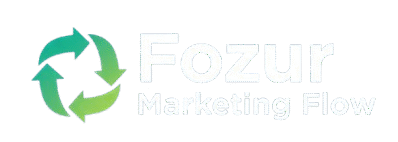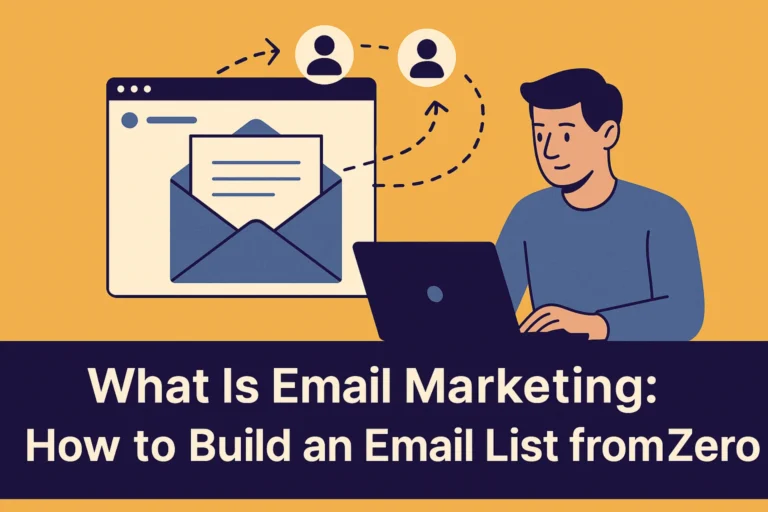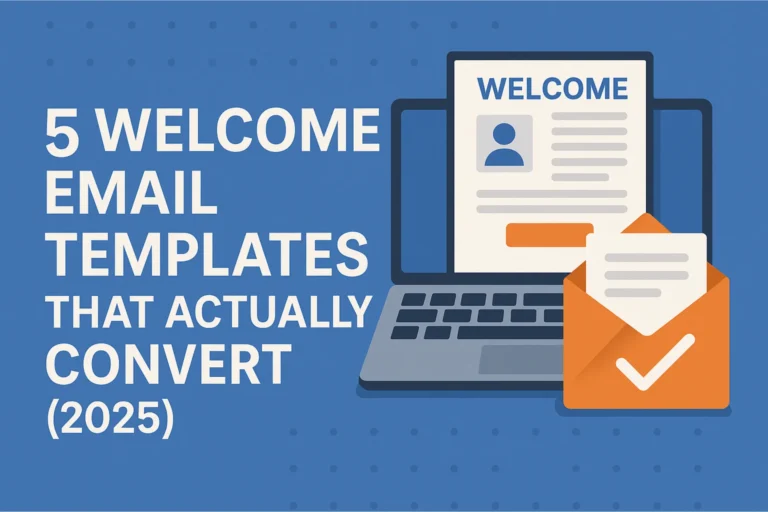How Automation Saves Time and Boosts ROI: The Complete Guide for 2025
Imagine your marketing team working around the clock — sending emails, updating CRM data, and following up with leads — but no one actually clicking “Send.” That’s not a dream. That’s automation.
In today’s fast-paced digital economy, automation has become the backbone of high-performing businesses. It eliminates repetitive work, improves accuracy, and creates space for creativity and strategy. More importantly, it directly improves your return on investment (ROI) — by saving hours, reducing errors, and maximizing every dollar spent.
In this guide, you’ll learn how automation truly saves time and boosts ROI across marketing, sales, and operations. You’ll also discover actionable strategies, real-world examples, and the key metrics you need to measure success.
1. What Is Automation and Why It Matters for ROI
Automation is the process of using software and technology to perform routine tasks without human intervention. In a business context, it powers everything from email marketing and customer segmentation to invoicing, lead management, and reporting.
The connection between automation and ROI is simple but powerful:
When you reduce manual work, you free time for higher-value activities — which increases profit without increasing cost.
ROI (Return on Investment) measures the profitability of any business activity. Automation increases ROI by:
- Reducing labor hours
- Increasing accuracy and consistency
- Enabling personalization at scale
- Improving customer experience
- Shortening sales cycles
In essence, automation lets teams do more with less effort, compounding productivity over time.
2. How Automation Actually Saves Time
Automation doesn’t just make things faster — it redefines how work happens. Let’s break down the biggest time-saving mechanisms.
1️⃣ Eliminating Repetitive Tasks
Routine work like scheduling posts, tagging leads, sending confirmations, or generating reports can be completely automated.
Example: Instead of manually emailing every new subscriber, an email automation workflow sends a personalized welcome series instantly.
2️⃣ Seamless System Integration
Automation connects multiple tools — like your CRM, email platform, and analytics dashboard — so data flows automatically. No more exporting and importing CSV files.
3️⃣ 24/7 Operations
Humans need rest; automation doesn’t. You can set triggers to run processes any time, whether it’s 2 PM or 2 AM.
4️⃣ Reduced Human Error
Automation ensures accuracy in data entry, reporting, and segmentation. Less time fixing mistakes = more time for growth.
5️⃣ Real-Time Decision-Making
With automated alerts, dashboards, and reports, decisions can be made instantly instead of waiting for manual updates.
💡 Example:
A sales team using CRM automation saved an average of 5 hours per week per rep, translating into over 250 saved hours annually — time they used for lead nurturing and closing deals.
3. The ROI Equation: Measuring the Impact of Automation
Automation is most powerful when its impact is measurable.
Here’s a simple formula to calculate ROI:
ROI (%) = [(Gain from Automation – Cost of Automation) / Cost of Automation] × 100
Example Calculation
Let’s say:
- Automation saves your team 10 hours/week.
- Your average hourly cost is $40.
- That’s $400 saved per week, or $20,800 per year.
- Your automation platform costs $3,000 annually.
➡️ ROI = [(20,800 – 3,000) / 3,000] × 100 = 593%
That’s nearly 6x your investment back in value.
Key ROI Metrics to Track
- Revenue growth per campaign
- Labor hours saved
- Customer acquisition cost (CAC) reduction
- Conversion rate uplift
- Retention and lifetime value improvements
4. Where Automation Delivers the Biggest ROI
Automation touches nearly every department. Below are the four areas that typically see the highest ROI.
A. Marketing Automation
Tasks Automated:
- Email campaigns
- Lead nurturing sequences
- Customer segmentation
- Social media scheduling
- Ad retargeting
Results:
Marketing automation can reduce operational costs by up to 12% while increasing lead conversion rates by 20–30%.
💡 Example:
A business using Brevo’s all-in-one platform automated their email campaigns and follow-ups, saving over 10 hours weekly while improving email ROI by 35%.
B. Sales Automation
Tasks Automated:
- Lead scoring and prioritization
- CRM data updates
- Proposal follow-ups
- Reminder notifications
Results:
Automated lead scoring helps sales reps focus only on high-intent leads, cutting time wasted on cold prospects and improving close rates by 25–40%.
C. Customer Support Automation
Tasks Automated:
- Ticket routing and categorization
- Chatbots for FAQs
- Post-interaction surveys
Results:
Support teams resolve tickets faster and reduce response times by up to 60%, significantly improving customer satisfaction scores.
D. Operations & Administration
Tasks Automated:
- Invoice generation
- Employee onboarding workflows
- Data entry and reporting
Results:
Internal automation reduces operational costs and speeds up approvals — directly impacting your ROI through faster turnaround and fewer bottlenecks.
5. Real-World Examples of Automation Driving Results
Case Study 1 — Marketing Efficiency Boost
A digital agency implemented Brevo’s automation workflows for client onboarding and reporting. They reduced manual reporting time from 10 hours to 2 per week — saving 400 hours annually and improving billable utilization.
Case Study 2 — E-commerce Cart Recovery
An online store set up automated abandoned-cart sequences. In 6 months, they recovered 22% of lost carts, adding $48,000 in extra revenue with zero manual effort.
Case Study 3 — CRM Integration Success
A B2B company connected its website forms to ActiveCampaign’s CRM automation. Response times dropped from 48 hours to 2 minutes, doubling lead conversion rate within a quarter.
6. Best Practices to Maximize ROI from Automation
1️⃣ Start with High-Impact, Low-Complexity Tasks
Automate repetitive, low-risk activities first — like welcome emails or reporting — before tackling complex workflows.
2️⃣ Standardize Data Before Automating
Clean data = accurate automation. Ensure consistent naming, tags, and structure across systems.
3️⃣ Keep Human Oversight
Automation supports humans, not replaces them. Always have manual review checkpoints.
4️⃣ Continuously Measure and Refine
Monitor key metrics monthly and optimize based on results. Delete outdated flows to reduce clutter.
5️⃣ Align Automation with Business Goals
Every automation should map to a clear objective — e.g., higher engagement, reduced churn, faster lead response.
7. Common Mistakes That Kill Automation ROI
| Mistake | Impact | Solution |
|---|---|---|
| Automating broken processes | Multiplies inefficiency | Fix the process first |
| Over-automation | Robotic customer experience | Keep personalization |
| Poor data hygiene | Wrong actions triggered | Regularly clean your lists |
| Ignoring analytics | Wasted potential | Track, analyze, optimize |
| No ownership | Lost accountability | Assign automation champions |
💡 Remember: Automation amplifies whatever system you have — good or bad. Get the fundamentals right first.
8. Choosing the Right Automation Platform
Here’s a quick comparison of popular tools for different business needs:
| Tool | Best For | Key Features | Pricing Range |
|---|---|---|---|
| Brevo (Sendinblue) | SMBs & all-in-one marketing | Email + SMS + CRM workflows | Affordable, scalable |
| HubSpot | Mid-size to enterprise | Full marketing + sales suite | Premium |
| ActiveCampaign | Advanced marketers | Behavior-based automation | Mid-range |
| Zapier | Integrations & workflow links | 3,000+ app connectors | Free to Pro tiers |
| Make (Integromat) | Custom workflow builders | Visual automation for devs | Low-cost flexibility |
✅ Pro Tip:
If you’re starting small, Brevo offers a perfect balance — combining email automation, CRM, and reporting without the enterprise price tag.
9. Quick Wins: Tasks You Can Automate Today
Don’t wait for a massive rollout — start with these five quick wins:
- Welcome Email Series — Triggered immediately on signup.
- Lead Tagging — Automatically label new contacts based on interest.
- Abandoned Cart Recovery — Recover 10–20% of lost sales.
- Social Media Scheduling — Pre-schedule posts for consistent visibility.
- Report Automation — Auto-generate performance summaries weekly.
Each of these takes less than a day to set up and delivers compounding ROI.
10. The Future of Automation and ROI in 2025 and Beyond
The future of automation is AI-powered optimization. Expect to see:
- Predictive workflows that anticipate customer behavior
- Hyper-personalized messaging based on real-time data
- Cross-platform orchestration between marketing, sales, and support
- Self-improving automations through machine learning
As these technologies evolve, businesses that invest early in smart automation will compound efficiency and profitability faster than their competitors.
Conclusion
Automation isn’t just about efficiency — it’s about elevating how your business works.
When you automate intelligently, you gain back hours, cut costs, and amplify results.
Every minute saved is a minute you can reinvest in strategy, creativity, and customer relationships — the true engines of growth.
Start small, track your metrics, and refine your processes. Over time, you’ll find automation doesn’t just save time — it multiplies your ROI.
Next Step: Audit your current workflows and identify one process to automate this week. That single action can unlock hours of productivity — and begin your path to measurable ROI.
FAQs
1. How does marketing automation save time?
By automating repetitive tasks like scheduling campaigns, tagging leads, and follow-ups, teams spend less time on busywork and more time on strategy.
2. What metrics should I track to measure ROI from automation?
Track cost savings, conversion rates, time saved, customer lifetime value (CLV), and overall revenue growth.
3. Can poor automation reduce ROI?
Yes. Over-automation or bad data can lead to errors and irrelevant messaging, which hurts customer relationships and conversions.
4. What’s the fastest way to see ROI?
Start with small workflows (like email sequences or cart recovery) — they typically deliver measurable results within 3–6 months.
5. Which tools offer the best ROI?
Brevo for all-in-one automation, ActiveCampaign for advanced logic, and HubSpot for enterprise-level integration.


